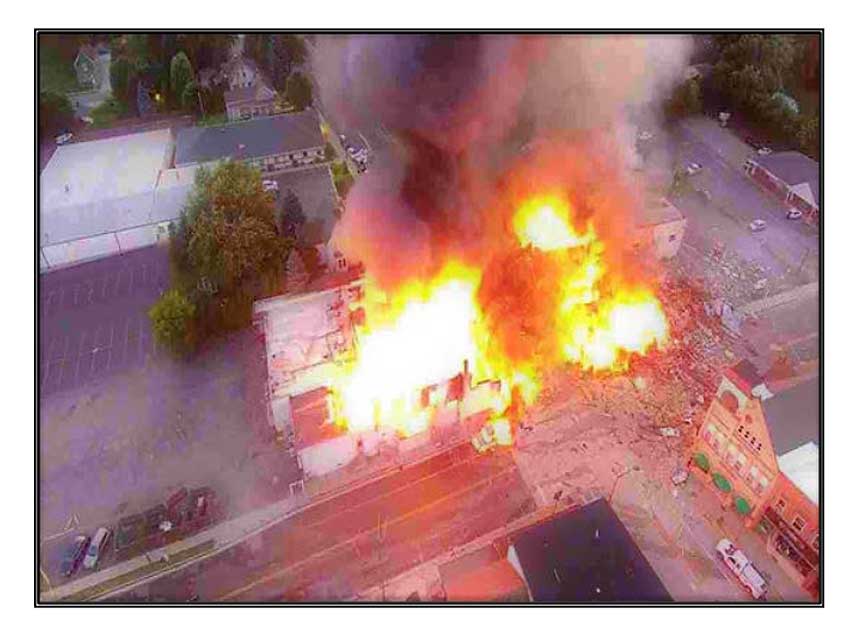
In July 2021, the National Institute for Occupational Safety and Health (NIOSH) Fire Fighter Fatality Investigation and Prevention Program released its report on a 2018 Wisconsin natural gas explosion that claimed the life of one firefighter and injured another.
RELATED FIREFIGHTER TRAINING
Tactical Size-Up for Explosive Gas Emergencies
Tactical Size-Up of Natural Gas Emergencies
On July 10, 2018, a 34-year old paid-on-call/volunteer fire Captain died, and another firefighter was injured in a building explosion while responding to a report of a natural gas leak. At 1820 hours the local combination fire department was dispatched for a report of gas odor at an intersection approximately 1 block away from the fire station. The initial arriving crew immediately began evacuating the surrounding buildings. Meeting resistance from civilians who were unwilling to evacuate businesses in the area, the Incident Commander called for additional personnel to respond to the station. A Captain with the fire department arrived following the staffing request, along with several other firefighters. After checking in with the Incident Commander, the Captain, along with firefighters from the initial responding crew, entered a building near the suspected leak to control utilities in the basement. As the crew was exiting, the building exploded. One firefighter walked away from the blast with minor injuries. Firefighters on-scene searched for the Captain and the other firefighter in the pile of rubble from the building. The injured firefighter was found buried up to his face, conscious and moving. He was transported to the hospital in critical condition having sustained multiple fractures to his jaw and head. The Captain was found face down in the rubble. Crews worked to extract the Captain, loaded him into a waiting Advanced Life Support (ALS) staffed ambulance, and performed cardiopulmonary resuscitation until they reached the hospital where he later passed away from his injuries.
Contributing Factors
- Sub-contractor performing unpermitted directional boring for underground utility
- Natural gas leak caused by directional boring
- Natural gas line explosion
- Responders working in blast radius to evacuate civilians lingering in the area
- Captain and crew entered building previously evacuated during primary search to attempt to control utilities
Key Recommendations
- Fire departments should refer to the 2020 Emergency Response Guidebook [USDOT 2020] and operate outside of the hot zone once civilians are evacuated
- Fire departments should ensure that Incident Commanders continuously evaluate the risk versus gain when making operational decisions during evacuation operations.
- Fire departments should ensure that firefighters are trained in situational awareness, personal safety, and accountability.
- Fire Departments should ensure that their members (and specifically their hazardous materials teams) are provided and trained in the latest tactics and equipment for detecting and responding to hazardous materials situations, including gas leaks.

